I had my posture examined for the first time - and this is what I learnt after just one session
After a posture exam, writer Susan Griffin discovered that the idea of 'good posture' is something of a myth
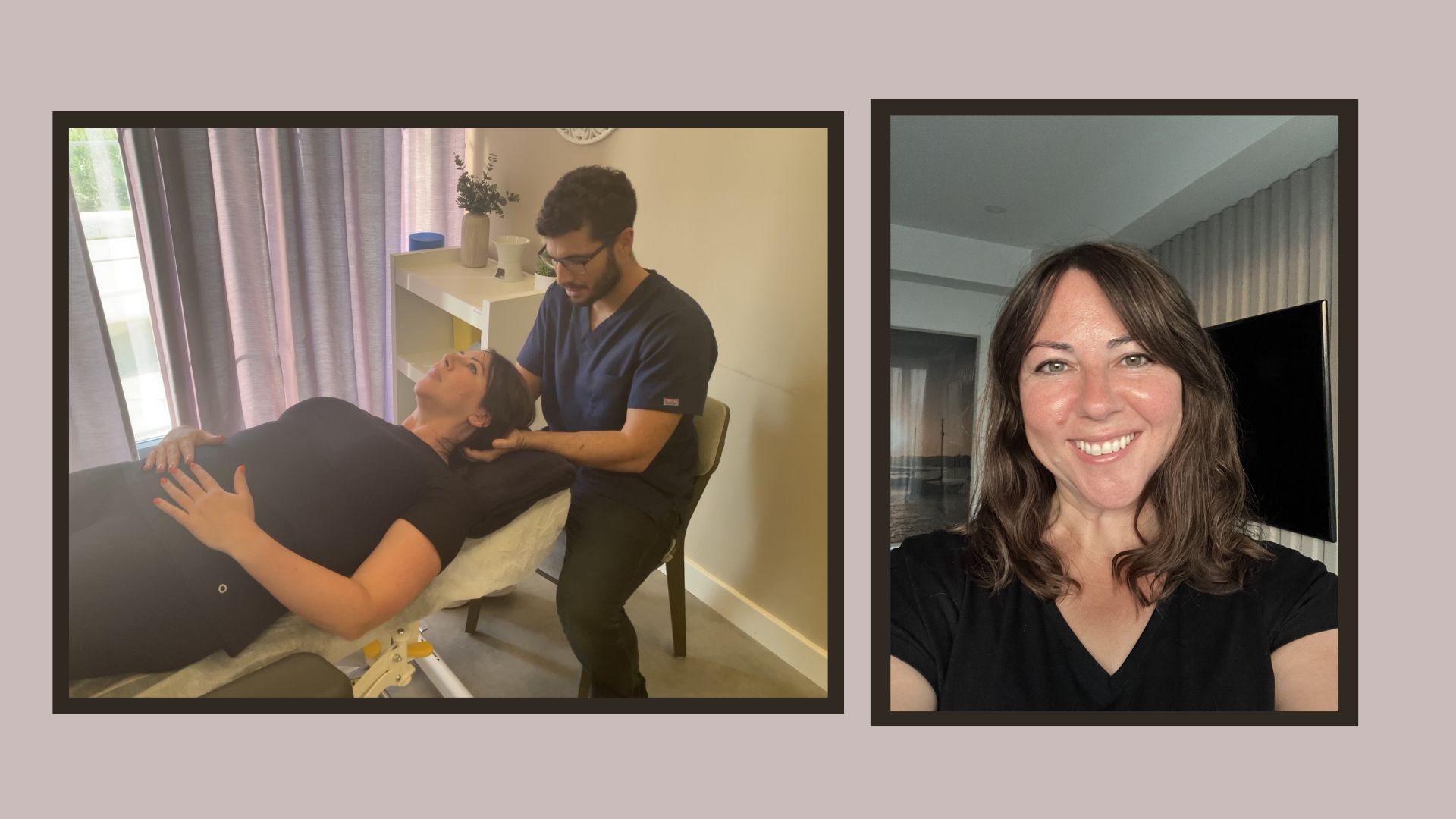
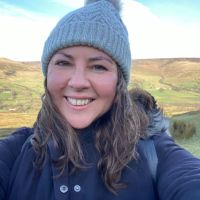
Have you ever heard of a posture exam? I hadn't until recently. Like millions of people, I spend my days hunched over a laptop and I've worked this way for the last 20 years. In the past, I've even joked about the contorted positions I’ve found myself in - but it’s not so amusing in your 40s when those distortions are playing out in myriad twinges, tensions and jolts of pain. And, of course, there is the general toll it undoubtedly takes on my posture.
It’s not like I lead an entirely sedentary life. I love nothing more than climbing hills, but at the age of 42, my knees click when I get up and my right knee has been incredibly painful at times. My neck often spasms, the muscles along my shoulders resemble bricks, and shamefully, I can’t touch my toes.
You can’t help but wonder what a lifetime of bad habits, including carrying a heavy bag on the same side, might mean for my body - now and in the future. That is why I thought I would get my posture assessed.
I expected a one-off session in a city nearby where isolated areas would be examined and prodded before I was told to sit up straight and be sent on my way. It didn’t pan out quite that way. Instead, I found myself at the acclaimed Longevity Health & Wellness Retreat in Portugal following a surprise invitation. The itinerary was based on their Osteo Rebalance program, which combined detox spa treatments and health checks with a session with their resident osteopath Ricardo Rosa, who is recognised as one of the world’s leading healers. I envisioned some sun, relaxation, a bit of pampering and practical tips on how to live my best life moving forward.
And it was all that. But as much as the posture exam helped me understand how to fix my posture and deal with shoulder, neck, and lower back pain better, it was also a profound experience. It was a week that left me re-evaluating how I take care of myself, or more pressingly, why I don’t do as much as I could.
What I learnt at my posture exam
1. Good posture is overrated
When I sit down with Ricardo for my osteopathy session, which is part of the posture exam, one of the first questions he asks is, “Why are you so focused on posture?” I admit, I am a little taken aback. Isn’t good posture essential? “Posture itself is overrated,” he states.
“There is no correct posture unless you’re talking about the correct anatomical posture you see in books, but no one fits into that type of posture because we are affected by different things, and we all do different things. You are a writer, I am an osteopath, someone else is in construction, and everyone is going to have a posture that is an adaptation to do their job without feeling symptoms,” he explains.
Sign up to our free daily email for the latest royal and entertainment news, interesting opinion, expert advice on styling and beauty trends, and no-nonsense guides to the health and wellness questions you want answered.
“Good posture is essentially posture where you can function with as little energy expended as possible, and it is efficient. If you are more hunched or bent forward and you don’t have symptoms, then that’s a perfectly normal posture.”
It’s an eye-opening start to proceedings and brushes aside the traditional notions of ‘chin up, shoulders back’, or the image of young women in the 1950s balancing books on their heads as they walk. And, frankly, it's a relief to hear.
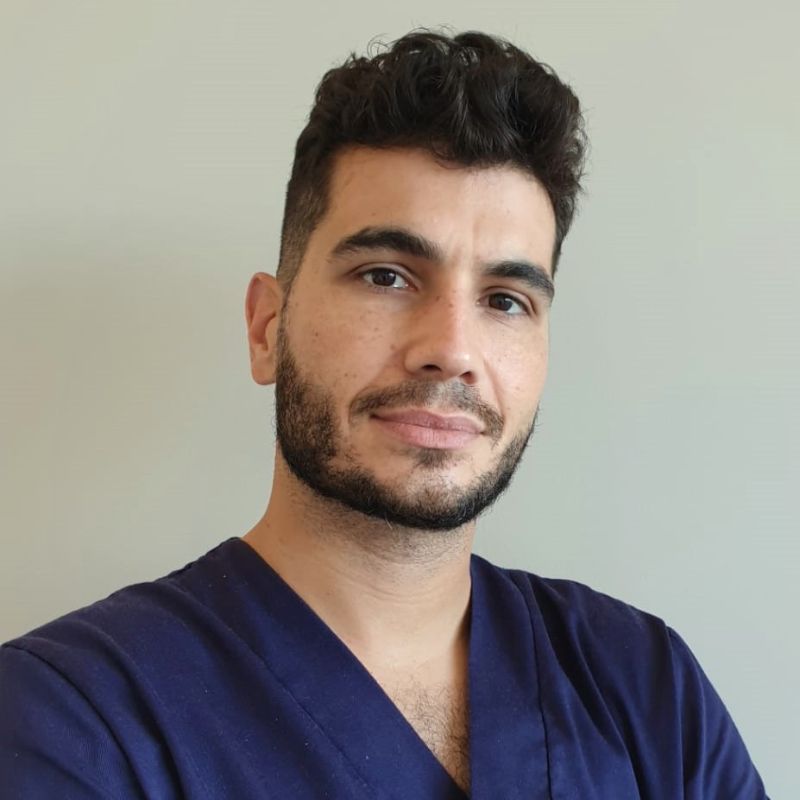
A qualified Physiotherapist and Osteopath, Ricardo Rosa was recognised by Conde Nast Traveller as one of the 19 best healers in the world.
He studied physiotherapy at the Algarve’s Escola Superior de Saúde Jean Piaget, and pursued Osteopathy training at Osteopathy at Escuela de Osteopatia. He is well experienced in patellofemoral pain syndrome, sports injury prevention, orthopaedic traumas and manual and orthopaedic physiotherapy.
2. You need to retrain your software
During the session, Ricardo does an evaluation of my vertebrae to measure my static posture. Ideally, muscles should be working together, rather than one side of the spine pulling more than the other.
Two of the highest readings are in my neck and on my lower back, notably where the spine begins and ends. He reckons it could be compensatory and longstanding, and he goes on to manipulate these areas.
He rotates my neck, lifts my leg, and presses my right side, explaining where and why it feels tense and rigid. Within a short space of time, I can feel more movement.
However, Ricardo is keen to stress that it is crucial to retrain your ‘software,’ as in retrain your brain, to make long-lasting changes and that means implementing preventative and proactive changes to your lifestyle, rather than reactionary measures. Otherwise, the body returns to what it knows.
“Of course, you can pay someone to stretch and manipulate you, and make you more flexible, but then it’s not programmed and doesn’t become integrated, so you lose it.”
As wonderful as it is to get a massage because it can help you feel more in tune with your body and where your sore points are, the relief from any tension is only temporary. “It is a short-term fix," says the osteopath. "You are just numbing it, but not addressing underlying problems."
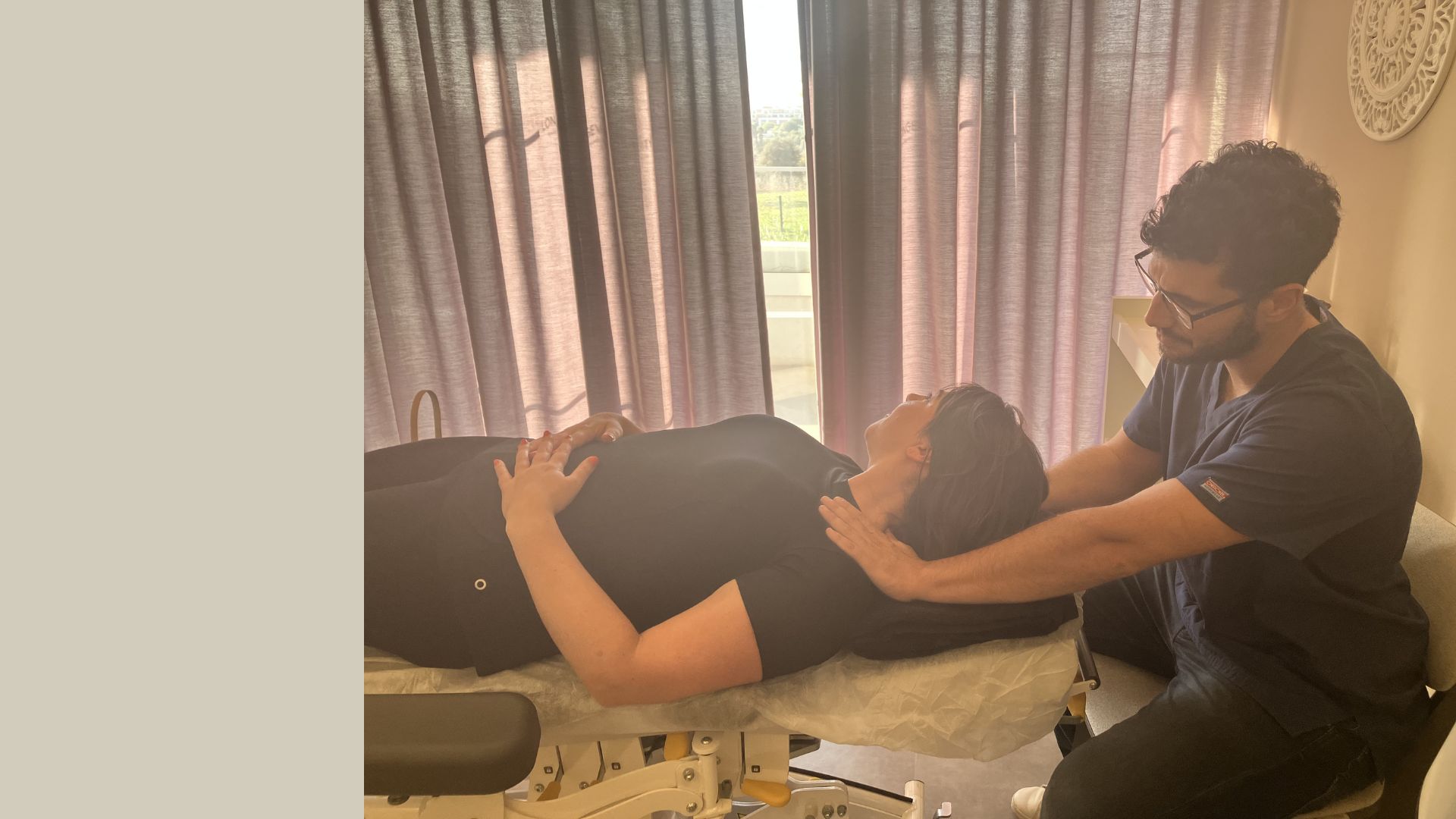
A posture exam involves manipulation of both sides of the body, the neck, and both legs.
3. We all need to move more
The symptoms we often associate with ‘bad’ posture (aching muscles, spasms), are really to do with a lack of movement.
“Take your writing, you spend most of the time working within a square space in front of you. If you then go to play tennis, it will feel awkward because you have to open your arm up to a range you don’t often explore,” says Ricardo.
At this point in the posture exam, I wondered whether he had seen my padel tennis pictures since this was the epitome of awkwardness for me.
“It’s not a problem with posture, it’s a lack of exploration,” he continues. “Babies explore everything but as people age, they develop issues by repeating the same patterns and not exploring other movements. It is why yoga as a workout, Pilates, and Tai Chi are so beneficial because you involve many variables.”
Of course, humans are naturally resistant to change. “Think of it like a rusty door. It is difficult to move at the beginning but by repetition, it becomes free. Stop using it and rust sets in again,” says Ricardo.
I do know this on some level. It's why I made a conscious decision to head out walking more last year (after muddling through some hiking mistakes along the way). My knee pain has eased because they are not bent beneath a desk as much as they were, but it's also only one other type of movement.
As Ricardo emphasises, the key is variation, so I make a mental note to try new classes.
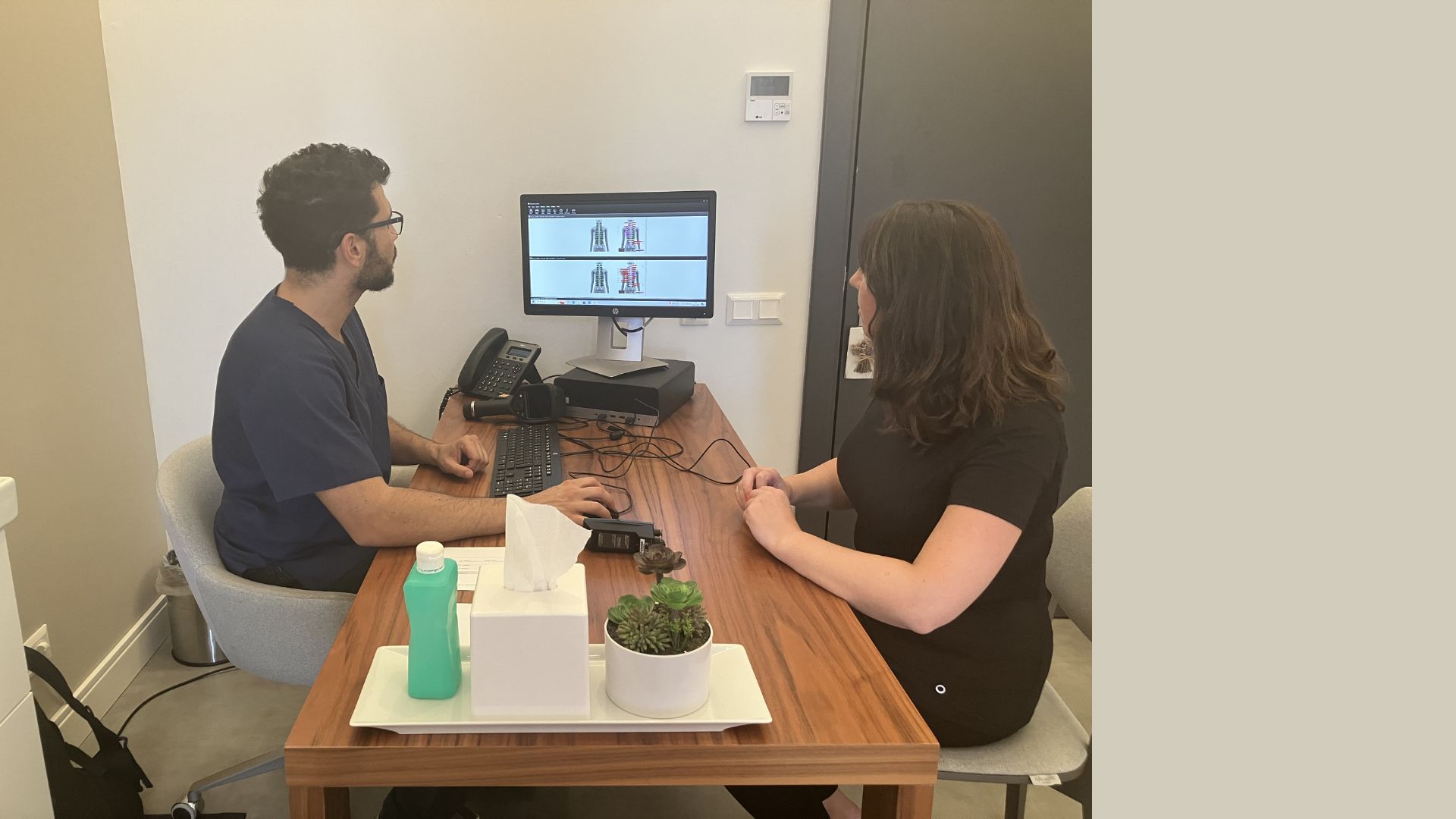
Results from a posture exam can help you determine what areas of the body need assistance.
4. Posture is not something you can solely focus on
Over three days at Longevity, which is one of several options available at The Wellness Holiday Boutique in Portugal, I was kneaded, massaged, scrubbed, masked, analysed, advised and placed in capsule-like devices, such as the Iyashi Dome, which left me dripping with sweat.
Alternating between states of exhaustion, blissful relaxation and invigoration, it was both incredible and intense. It also made me a little sad because it highlighted how neglectful of my body I have been.
We are all so busy all the time and we deprive ourselves of basic nourishment, ignore niggles, and battle through instead of giving ourselves the dedicated focus we deserve.
Taking the time to do something as basic as a body scrub, create a comforting meal or enjoy a moment of quiet contemplation with regards to how we feel physically or mentally can feel like an indulgence, so we don’t.
This neglect can filter into how we sit, stand and move. It's why one of the enduring takeaways from the trip is that posture is not something to be addressed in an autonomous capacity but as part of an enduring and holistic approach to self-care.
Tips to improve your posture
- Move more: As Ricardo says, “Move in ways that you are not used to, adapt and don’t be static. The more flexible you are in the mind, the more flexible your body and vice versa, which is vital as you age.” For example, if you're a regular runner then trying a program of Pilates for beginners or yoga every day could fire up your body.
- Train the brain to breathe deep: This creates stability around the core. “Put a relatively stretchy band around the ribs, so you have something to push against and focus on breathing that engages the diaphragm,” he says.
- Sit forward in your chair: “You will naturally want to move after a while,” but as leaning forward is an active, dynamic position, it's 'better' for your posture than sitting and leaning back. “You’ll end up sitting like that, hunched, for ages and then wonder why it hurts.” Look into ergonomic chairs, including exercise balls that keep the muscles active.
- Incorporate some strength training into your routine: “It is the sweet spot between mild discomfort and pain to increase the tolerance of muscles,” explains Ricardo. “Learn to hold a higher load than you are used to in daily life and open the chest because it is where everything gets tight.” You can do this through classic weightlifting in the gym or another program that fits in with your daily routine already, like Pilates for strength training.
- Make yourself a priority: And from a personal point of view, I would say allow yourself to be a priority without feeling guilty. Create whatever time you need. It can be emotive to think about why you have not done it before or are averse to doing it.
A journalist with two decades of experience, Susan interviewed A-list names in film and TV before going freelance and focusing on health, wellbeing, and lifestyle features. She has since spoken to world-renowned experts on the most innovative and effective ways to look after your mind and body; her work appearing in publications such as Daily Express, Daily Mirror, Metro, Fabulous and The Telegraph. When Susan isn’t working on her laptop, she is most content hiking in the Peak District or finding quiet camping spots to while away a weekend and knows first-hand the restorative benefits of being outdoors.
